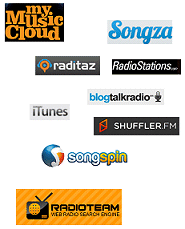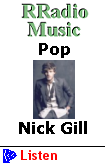 Analytics, Metrics and Music for the Radio Industry
Analytics, Metrics and Music for the Radio Industry
 An Indie Artist Pipeline to Internet Radio
An Indie Artist Pipeline to Internet Radio
 Radio Industry ROI Strategy
Radio Industry ROI Strategy
 A New Breed of Indie Artists
A New Breed of Indie Artists
What is Radio Competition?
Speak of a double-edged sword and it normally means you have a good side and an alternative bad side. I'll make the argument that in radio the double-edged sword, as a metaphor, stands more for serving radio's two masters - audience and advertisers. For years, radio served both groups well.
For a time, when radio was but a handful of media properties to turn to for entertainment (or informing the masses through ads), the road was gold and all things were swell. Then came new media.
The first wave of desktop-based internet-connected boxes caused little emotion within the radio industry; it spread opportunity wide for pureplay station operators, and audiences' attention thin. Radio's approach was to ignore the passing fad and keep a focus on consolidation.
| "Today's managers must master new methods of melding what radio has with new media accountability and nimbleness." |
New media has matured to mobile. The learning curve is complete for youth, having two generations using non-radio devices as a centerpoint of living - and they're loving it. Those in radio who continued as if nothing was happening are finding less happening for them now. |
The struggle is getting even more difficult, in part, because radio insists it represents a larger portion of audio listenership than reality delivers.
Today, many more times than you'll read in any radio industry publication, people are choosing to listen to a device or desktop over listening to the radio. (As usual, I repeat: I am not saying radio is dead. I am saying that the radio industry has much catching up to do realtive to what is being requested currently by audience and advertisers.)
Radio has more competition than it will admit. We again turn to Clear Channel-owned "Inside Radio" for a headline, "Microsoft tries new hand at digital radio." In its two following paragraphs are these words: "...Microsoft is launching a new ad-supported on-demand music/internet radio service...", and "It appears to be more of a threat to Spotify and Pandora than iHeartRadio and TuneIn." The logic leading to the latter sentence escapes me; in itself, it appears as an appeasement to readers that broadcast radio will be impacted little by "Xbox Music."
|
I did a quick assessment of sources for audio entertainment and information that are not "radio." NOT counting the obvious names like Pandora, Spotify, Last.FM, Live365, etc., I found 33 options for consumers, artists, and radio station operators. Here are 7 alternative music sources for consumers alone: My Music Cloud, RadioStations.com, RadioTeam, raditaz, Shuffler.fm, songspin, and songza. There are multiple talk-format alternatives like BlogTalk Radio and iTunes Podcasts. 'nough said.
On the advertising side, thousands of options exist. Nearly all offer data sets that the radio industry refuses to acknowledge hold value. "Reach" and frequency are terms in new media that are approaching kinship to "hand crank" for automobiles, yet radio industry sources keep quoting reaching 93% of the US population weekly as if it is a primary objective in these days of data granularity. |
 |
"A/B Testing" and "ROI" are in the process of replacing "reach and frequency." Given the learning curve required to feel comfortable using these new terms, the radio industry still has about five years left before an ad over-the-air is worth less than a targeted banner.
Today's managers must master new methods of melding what radio has with new media accountability and nimbleness.
What holds the radio industry back is its diminishing ability to get into the mind of an advertiser or audience member when either decides they want to use "audio." Competition for a listener's time - and advertiser dollars - is coming from every angle, and radio simply isn't responding at the level needed.










